Introducing Precisely for Data Integrity
David Menninger's Analyst Perspectives
JANUARY 25, 2021
At the same time, organizations have become more disciplined about the data on which they rely to ensure it is robust, accurate and governed properly.
This site uses cookies to improve your experience. To help us insure we adhere to various privacy regulations, please select your country/region of residence. If you do not select a country, we will assume you are from the United States. Select your Cookie Settings or view our Privacy Policy and Terms of Use.
Cookies and similar technologies are used on this website for proper function of the website, for tracking performance analytics and for marketing purposes. We and some of our third-party providers may use cookie data for various purposes. Please review the cookie settings below and choose your preference.
Used for the proper function of the website
Used for monitoring website traffic and interactions
Cookies and similar technologies are used on this website for proper function of the website, for tracking performance analytics and for marketing purposes. We and some of our third-party providers may use cookie data for various purposes. Please review the cookie settings below and choose your preference.

David Menninger's Analyst Perspectives
JANUARY 25, 2021
At the same time, organizations have become more disciplined about the data on which they rely to ensure it is robust, accurate and governed properly.
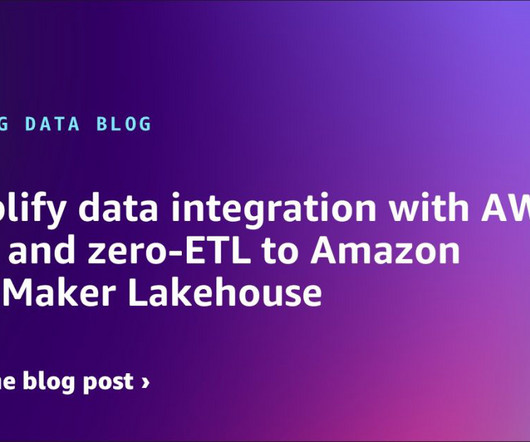
AWS Big Data
DECEMBER 4, 2024
With the growing emphasis on data, organizations are constantly seeking more efficient and agile ways to integrate their data, especially from a wide variety of applications. In addition, organizations rely on an increasingly diverse array of digital systems, data fragmentation has become a significant challenge.
This site is protected by reCAPTCHA and the Google Privacy Policy and Terms of Service apply.
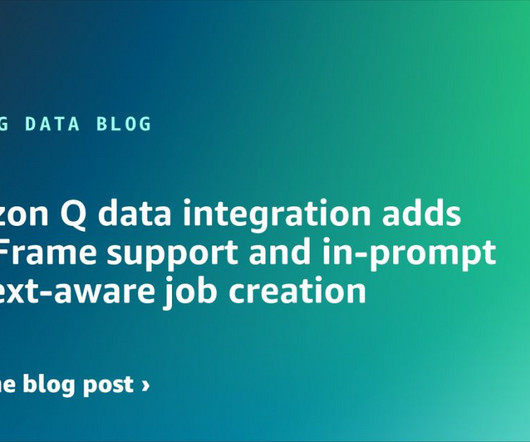
AWS Big Data
DECEMBER 20, 2024
Amazon Q data integration , introduced in January 2024, allows you to use natural language to author extract, transform, load (ETL) jobs and operations in AWS Glue specific data abstraction DynamicFrame. In this post, we discuss how Amazon Q data integration transforms ETL workflow development.
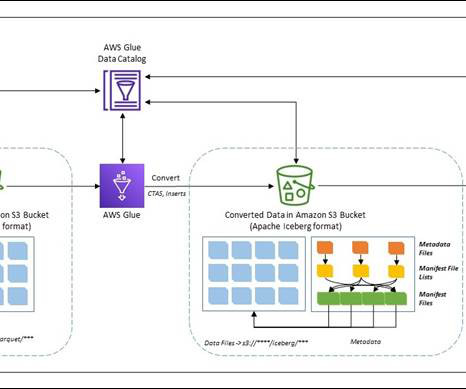
AWS Big Data
OCTOBER 3, 2023
A data lake is a centralized repository that you can use to store all your structured and unstructured data at any scale. You can store your data as-is, without having to first structure the data and then run different types of analytics for better business insights.
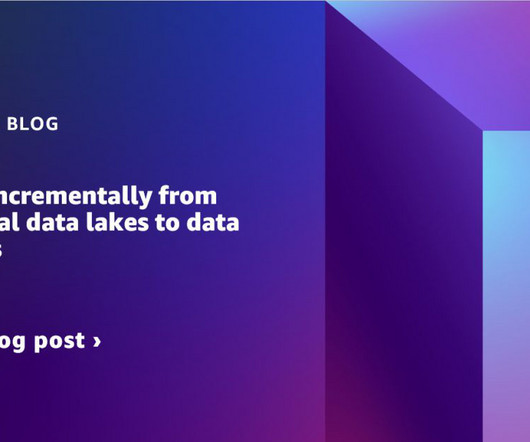
AWS Big Data
OCTOBER 19, 2023
Data lakes and data warehouses are two of the most important data storage and management technologies in a modern data architecture. Data lakes store all of an organization’s data, regardless of its format or structure.

CIO Business Intelligence
FEBRUARY 27, 2025
According to a study from Rocket Software and Foundry , 76% of IT decision-makers say challenges around accessing mainframe data and contextual metadata are a barrier to mainframe data usage, while 64% view integrating mainframe data with cloud data sources as the primary challenge.

AWS Big Data
DECEMBER 17, 2024
Today, Amazon Redshift is used by customers across all industries for a variety of use cases, including data warehouse migration and modernization, near real-time analytics, self-service analytics, data lake analytics, machine learning (ML), and data monetization.
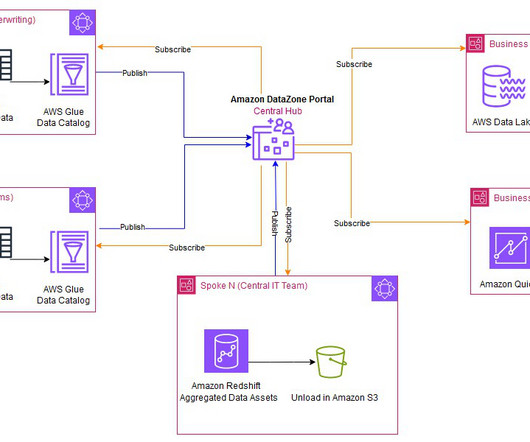
AWS Big Data
AUGUST 15, 2024
Unlocking the true value of data often gets impeded by siloed information. Traditional data management—wherein each business unit ingests raw data in separate data lakes or warehouses—hinders visibility and cross-functional analysis. Business units access clean, standardized data.

AWS Big Data
SEPTEMBER 4, 2024
Effective data analytics relies on seamlessly integrating data from disparate systems through identifying, gathering, cleansing, and combining relevant data into a unified format. This solution also allows you to update certain fields of the account object in the data lake and push it back to Salesforce.
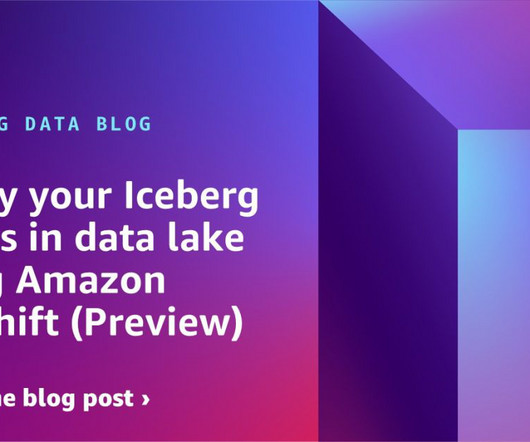
AWS Big Data
AUGUST 31, 2023
Amazon Redshift enables you to directly access data stored in Amazon Simple Storage Service (Amazon S3) using SQL queries and join data across your data warehouse and data lake. With Amazon Redshift, you can query the data in your S3 data lake using a central AWS Glue metastore from your Redshift data warehouse.
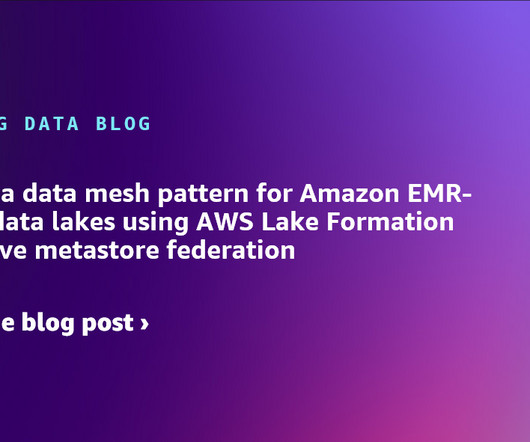
AWS Big Data
JUNE 10, 2024
For detailed information on managing your Apache Hive metastore using Lake Formation permissions, refer to Query your Apache Hive metastore with AWS Lake Formation permissions. In this post, we present a methodology for deploying a data mesh consisting of multiple Hive data warehouses across EMR clusters.
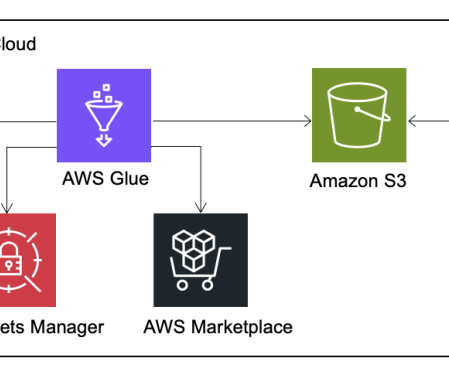
AWS Big Data
SEPTEMBER 10, 2024
We often see requests from customers who have started their data journey by building data lakes on Microsoft Azure, to extend access to the data to AWS services. In such scenarios, data engineers face challenges in connecting and extracting data from storage containers on Microsoft Azure.

AWS Big Data
JULY 31, 2024
In the current industry landscape, data lakes have become a cornerstone of modern data architecture, serving as repositories for vast amounts of structured and unstructured data. Maintaining data consistency and integrity across distributed data lakes is crucial for decision-making and analytics.
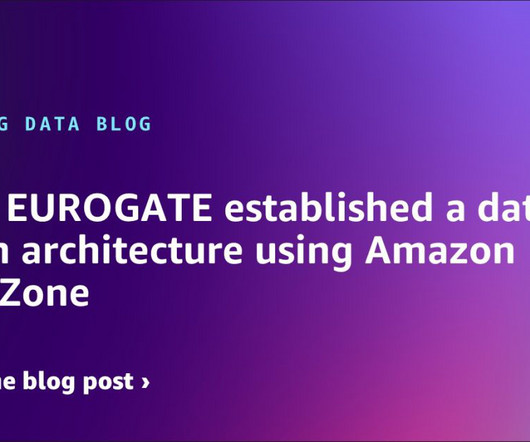
AWS Big Data
JANUARY 15, 2025
For container terminal operators, data-driven decision-making and efficient data sharing are vital to optimizing operations and boosting supply chain efficiency. In addition to real-time analytics and visualization, the data needs to be shared for long-term data analytics and machine learning applications.
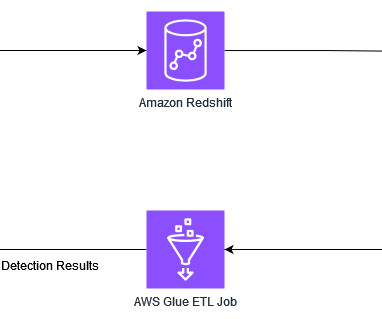
AWS Big Data
DECEMBER 15, 2023
With the exponential growth of data, companies are handling huge volumes and a wide variety of data including personally identifiable information (PII). PII is a legal term pertaining to information that can identify, contact, or locate a single person. For our solution, we use Amazon Redshift to store the data.

David Menninger's Analyst Perspectives
NOVEMBER 16, 2021
Talend is a data integration and management software company that offers applications for cloud computing, big data integration, application integration, data quality and master data management.
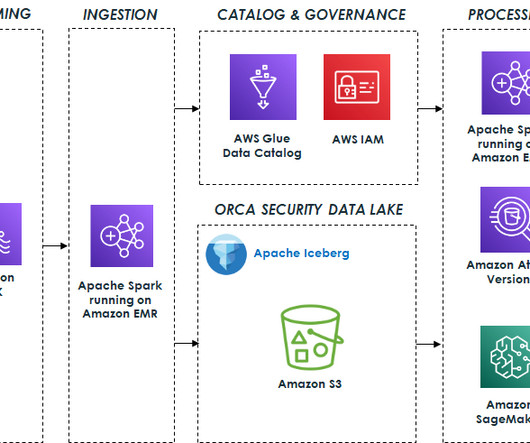
AWS Big Data
JULY 20, 2023
With data becoming the driving force behind many industries today, having a modern data architecture is pivotal for organizations to be successful. In this post, we describe Orca’s journey building a transactional data lake using Amazon Simple Storage Service (Amazon S3), Apache Iceberg, and AWS Analytics.

Grooper
MARCH 5, 2020
Information stewards are the critical link for organizations committed to innovation and maximizing the effective use of data. Haven’t heard the term “information steward” before? By solidifying your understanding of information stewardship, you ensure: Better use of internal resources. Lower cost data processes.

AWS Big Data
JULY 10, 2024
Now you can author data preparation transformations and edit them with the AWS Glue Studio visual editor. The AWS Glue Studio visual editor is a graphical interface that enables you to create, run, and monitor data integration jobs in AWS Glue. In this scenario, you’re a data analyst in this company.
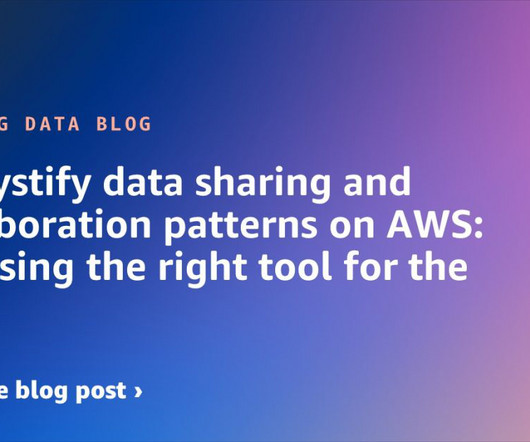
AWS Big Data
OCTOBER 21, 2024
However, enterprises often encounter challenges with data silos, insufficient access controls, poor governance, and quality issues. Embracing data as a product is the key to address these challenges and foster a data-driven culture. They would like to get a cross-organization visibility of supply chain and inventory data.
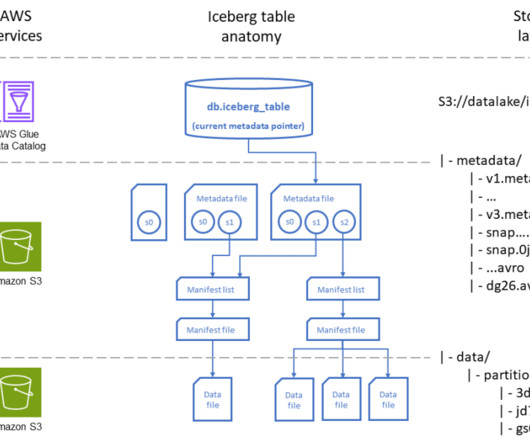
AWS Big Data
JULY 29, 2024
In the era of big data, data lakes have emerged as a cornerstone for storing vast amounts of raw data in its native format. They support structured, semi-structured, and unstructured data, offering a flexible and scalable environment for data ingestion from multiple sources.

Data Virtualization
APRIL 21, 2022
Reading Time: 3 minutes First we had data warehouses, then came data lakes, and now the new kid on the block is the data lakehouse. But what is a data lakehouse and why should we develop one? In a way, the name describes what.

AWS Big Data
JANUARY 26, 2023
AWS Glue is a serverless, scalable data integration service that makes it easier to discover, prepare, move, and integrate data from multiple sources. AWS Glue provides an extensible architecture that enables users with different data processing use cases. Refer to AWS Glue job parameters for more details.
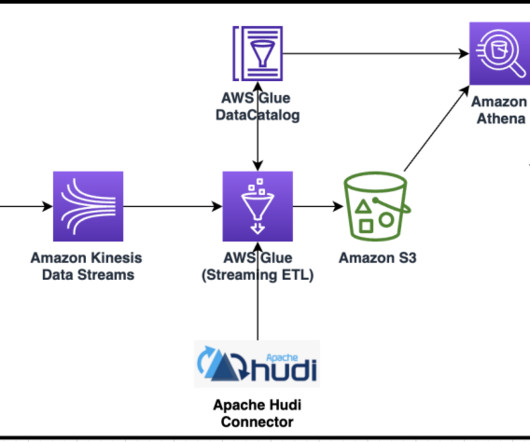
AWS Big Data
AUGUST 3, 2023
Data analytics on operational data at near-real time is becoming a common need. Due to the exponential growth of data volume, it has become common practice to replace read replicas with data lakes to have better scalability and performance. Apache Hudi connector for AWS Glue For this post, we use AWS Glue 4.0,

CIO Business Intelligence
OCTOBER 9, 2024
As the technology subsists on data, customer trust and their confidential information are at stake—and enterprises cannot afford to overlook its pitfalls. Yet, it is the quality of the data that will determine how efficient and valuable GenAI initiatives will be for organizations.
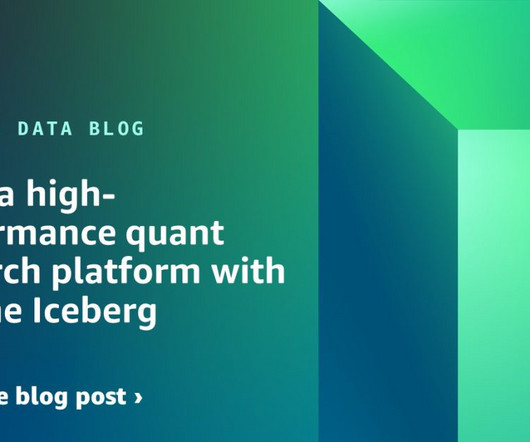
AWS Big Data
JANUARY 9, 2025
These features allow efficient data corrections, gap-filling in time series, and historical data updates without disrupting ongoing analyses or compromising data integrity. Unlike direct Amazon S3 access, Iceberg supports these operations on petabyte-scale data lakes without requiring complex custom code.
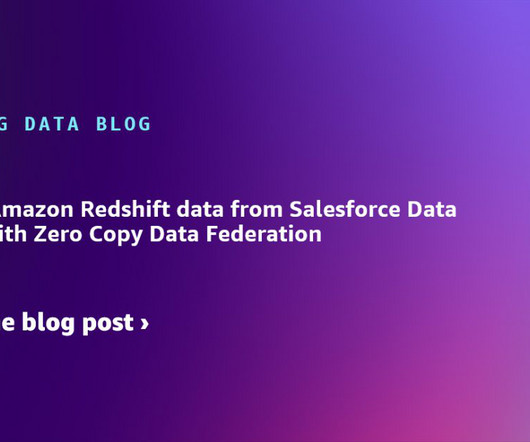
AWS Big Data
JUNE 25, 2024
This post is co-authored by Vijay Gopalakrishnan, Director of Product, Salesforce Data Cloud. In today’s data-driven business landscape, organizations collect a wealth of data across various touch points and unify it in a central data warehouse or a data lake to deliver business insights.

Data Virtualization
MARCH 16, 2023
Reading Time: 6 minutes Data lake, by combining the flexibility of object storage with the scalability and agility of cloud platforms, are becoming an increasingly popular choice as an enterprise data repository. Whether you are on Amazon Web Services (AWS) and leverage AWS S3.

Data Virtualization
MARCH 16, 2023
Reading Time: 6 minutes Data lake, by combining the flexibility of object storage with the scalability and agility of cloud platforms, are becoming an increasingly popular choice as an enterprise data repository. Whether you are on Amazon Web Services (AWS) and leverage AWS S3.

Data Virtualization
NOVEMBER 3, 2022
In attempts to overcome their big data challenges, organizations are exploring data lakes as repositories where huge volumes and varieties of. The post Is Data Virtualization the Secret Behind Operationalizing Data Lakes?

AWS Big Data
NOVEMBER 29, 2024
Customers often want to augment and enrich SAP source data with other non-SAP source data. Such analytic use cases can be enabled by building a data warehouse or data lake. Customers can now use the AWS Glue SAP OData connector to extract data from SAP. For more information see AWS Glue.

CIO Business Intelligence
APRIL 8, 2025
As data-centric AI, automated metadata management and privacy-aware data sharing mature, the opportunity to embed data quality into the enterprises core has never been more significant. Data lives across siloed systems ERP, CRM, cloud platforms, spreadsheets with little integration or consistency.
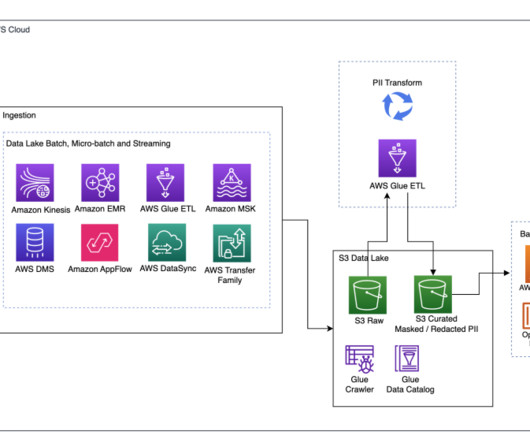
AWS Big Data
JANUARY 12, 2024
These responsibilities include being compliant with data privacy laws and regulations and not storing or exposing sensitive data like personally identifiable information (PII) or protected health information (PHI) from upstream sources.

Data Virtualization
OCTOBER 5, 2022
For this reason, organizations must periodically revisit their data architectures, to ensure that they are aligned with current business goals.

CIO Business Intelligence
JUNE 9, 2022
All this data arrives by the terabyte, and a data management platform can help marketers make sense of it all. Marketing-focused or not, DMPs excel at negotiating with a wide array of databases, data lakes, or data warehouses, ingesting their streams of data and then cleaning, sorting, and unifying the information therein.
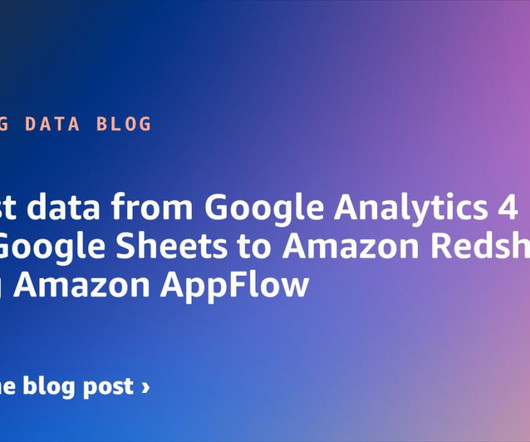
AWS Big Data
JANUARY 6, 2025
Amazon AppFlow bridges the gap between Google applications and Amazon Redshift, empowering organizations to unlock deeper insights and drive data-informed decisions. In this post, we show you how to establish the data ingestion pipeline between Google Analytics 4, Google Sheets, and an Amazon Redshift Serverless workgroup.

AWS Big Data
NOVEMBER 11, 2024
For more information, see Unleash the power of Snapshot Management to take automated snapshots using Amazon OpenSearch Service. Sesha Sanjana Mylavarapu is an Associate Data Lake Consultant at AWS Professional Services. For instructions, see Tutorial: Create an EventBridge scheduled rule for AWS Lambda functions.

DataKitchen
NOVEMBER 10, 2023
The Perilous State of Today’s Data Environments Data teams often navigate a labyrinth of chaos within their databases. Extrinsic Control Deficit: Many of these changes stem from tools and processes beyond the immediate control of the data team.
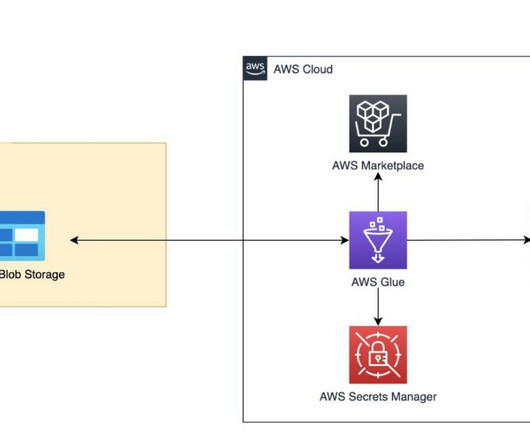
AWS Big Data
OCTOBER 20, 2023
Today, we are pleased to announce new AWS Glue connectors for Azure Blob Storage and Azure Data Lake Storage that allow you to move data bi-directionally between Azure Blob Storage, Azure Data Lake Storage, and Amazon Simple Storage Service (Amazon S3). option("header","true").load("wasbs://yourblob@youraccountname.blob.core.windows.net/loadingtest-input/100mb")
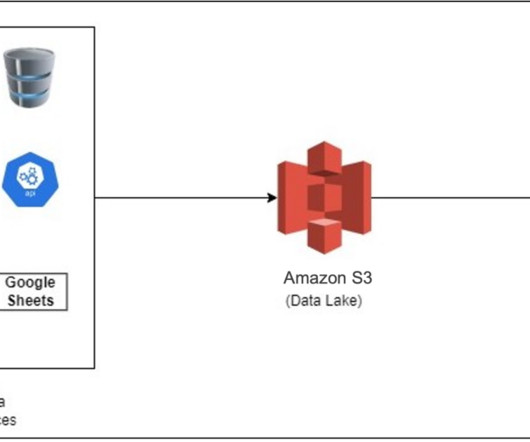
AWS Big Data
AUGUST 22, 2024
The infrastructure provides an analytics experience to hundreds of in-house analysts, data scientists, and student-facing frontend specialists. The data engineering team is on a mission to modernize its data integration platform to be agile, adaptive, and straightforward to use.
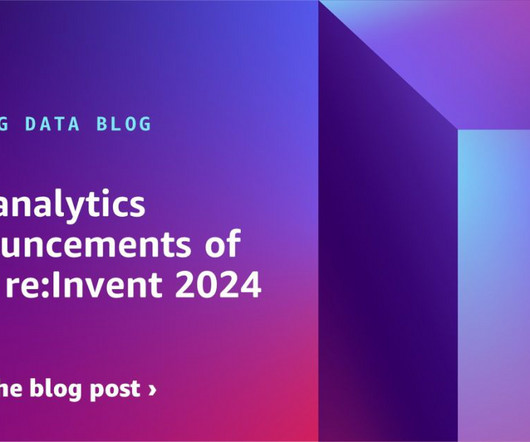
AWS Big Data
FEBRUARY 26, 2025
Analytics remained one of the key focus areas this year, with significant updates and innovations aimed at helping businesses harness their data more efficiently and accelerate insights. From enhancing data lakes to empowering AI-driven analytics, AWS unveiled new tools and services that are set to shape the future of data and analytics.

Data Virtualization
APRIL 30, 2025
Modern data architectures like data lakehouses and cloud-native ecosystems were supposed to solve this, promising centralized access and scalability. The post Why Every Organization Needs a Data Marketplace appeared first on Data Management Blog - Data Integration and Modern Data Management Articles, Analysis and Information.

Smart Data Collective
OCTOBER 17, 2022
Pipeline, as it sounds, consists of several activities and tools that are used to move data from one system to another using the same method of data processing and storage. Data pipelines automatically fetch information from various disparate sources for further consolidation and transformation into high-performing data storage.
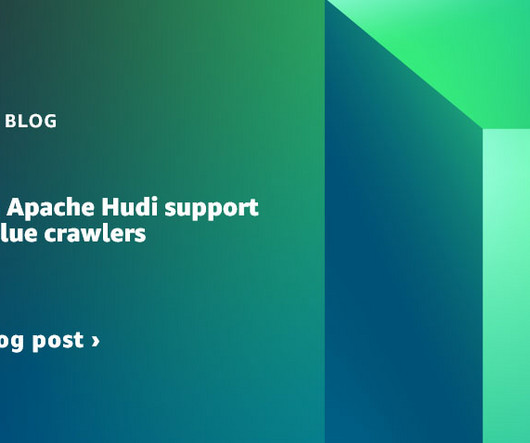
AWS Big Data
NOVEMBER 22, 2023
Apache Hudi is an open table format that brings database and data warehouse capabilities to data lakes. Apache Hudi helps data engineers manage complex challenges, such as managing continuously evolving datasets with transactions while maintaining query performance. Under Administration , choose Data catalog settings.
Expert insights. Personalized for you.
We have resent the email to
Are you sure you want to cancel your subscriptions?


Let's personalize your content